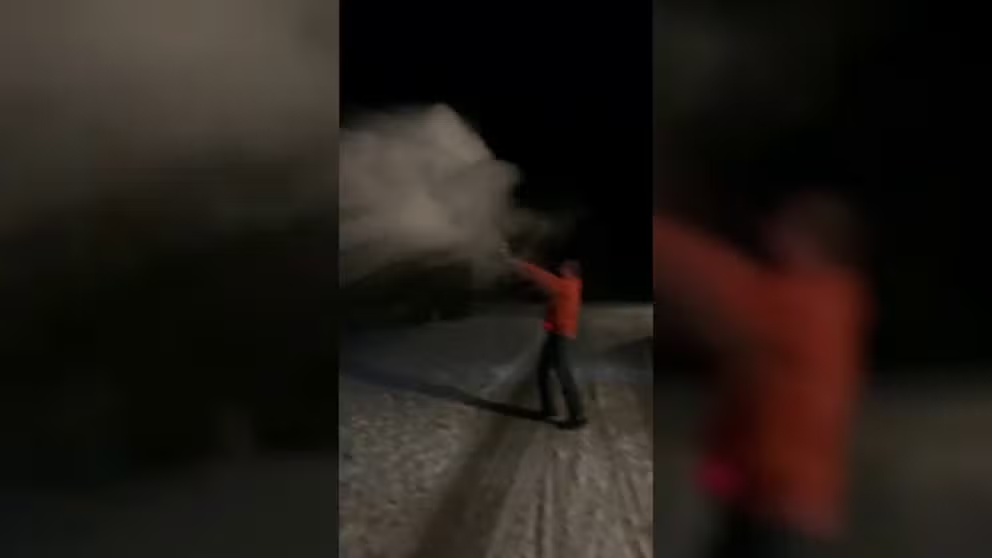'Not worth the risk': The dangers of tossing hot water into freezing air
Health care and science professionals say you should avoid the urge to participate in the experiment, especially children
FOX Weather meteorologist makes snow with boiling water
Don’t try this at home: FOX Weather Digital Content Producer and Meteorologist Brian Donegan made snow with boiling water as temperatures dropped to 4 degrees below zero on Jan. 15 in upstate New York.
Slinging boiling water into freezing air is one science experiment that is cool to watch but comes with risks.
The trend started making its rounds on social media years ago, and as bone-chilling temperatures have settled into much of the northern U.S. this week, more and more people might be attempting the hot-water trick.
However, health care and science professionals are asking people to avoid the urge to participate in the experiment, especially children.
"It is not worth the risk of severe burns to attempt this," said Brad Winfrey, a nurse and childhood safety and injury prevention manager at the Children’s Mercy Kansas City Center for Childhood Safety.
WINTER IS HERE AND MY KIDS INSIST ON WEARING SHORTS. IS IT OK?
There are several dangers, and Winfrey said he would never recommend tossing boiling water in the air.
"As a former pediatric trauma nurse, I have seen severe scald burns due to contact with hot water," Winfrey said.
If the boiling water comes in contact with skin, severe deep-tissue, third-degree scald burns can occur within seconds in children.
"Walking around with boiling water, especially around young children, is never a good idea and very dangerous," Winfrey said.
@officialfoxweather Don’t try this at home: Our #meteorologist in Berkshire, #NY made #snow with #boilingwater as wind chill dropped to -4°F on Jan. 15. #weather #science ♬ original sound - officialfoxweather
Hot water on clothing can result in the clothing retaining the heat, causing extended contact with skin and prolonged contact with heat. This can result in deeper burns.
Winfrey said children are also more at risk for burns than adults because they have thinner skin.
The science behind it is simple, according to Meteorologist Jason Lindsey, also known as "Mr. Science," with Hooked on Science.
When pitching boiling water into the air, the water rapidly evaporates and condenses, allowing a cloud to form.
"This is similar to the cloud which forms on a winter day as your breath hits the cold air," Lindsey said.
Temperatures must be at zero degrees, and the water must be boiling for the science to work.
According to Safe Kids Worldwide, hot water heaters should be set at a maximum temperature of 120 degrees which is quite a bit below the boiling point of 212 degrees.
There are alternatives for children looking for exciting ways to explore science. Click here to learn more about hands-on experiments using ingredients from around the house.
